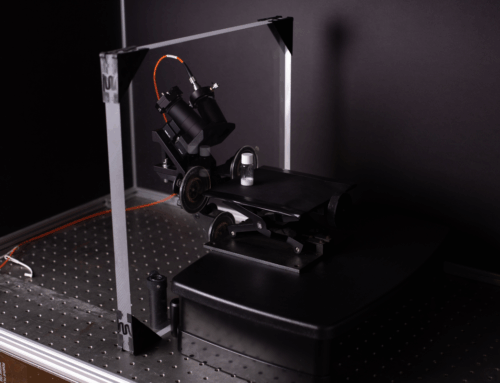Odin™ is IS-Instruments’ deep UV resonant Raman spectrometer. Ongoing testing continues to show its game-changing performance in measuring biopharma products. The instrument is compact, user-friendly, and capable of delivering high laser energy precisely at the target. Moreover, it provides a unique advantage when analysing fragile biological samples. Operating in the deep UV region can deposit large amounts of energy onto a sample. This often causes damage and degrades the resulting spectra as the material deteriorates.
To evaluate Odin™’s impact, researchers examined Immunoglobulin G (IgG), which is highly sensitive to UV exposure. The goal was to assess whether Odin™ could measure IgG without inducing degradation.
Understanding the Sample: Immunoglobulin G (IgG)
IgG is the most common antibody in human serum, representing around 75 per cent of total serum antibodies. It serves as a benchmark material for testing Deep UV Raman instruments. Several previous studies have measured IgG using deep UV Raman spectroscopy, making it ideal for performance comparison. For this experiment, researchers prepared a 1 mg/ml IgG solution in water.
Measurement Approach
The spectra were captured using 30-second integration times and averaged over 10 frames. The Odin™ HES spectrometer design produces a 600 µm laser spot, reducing power density at the target. This larger spot size helps minimise localised heating and potential damage. As a result, Odin™ can measure delicate biological materials more safely. Researchers collected IgG spectra under three experimental conditions:
1️⃣ Static: the same sample region was continuously exposed to the laser.
2️⃣ Rotating: the sample rotated, tracing a 15 mm circular path across the surface.
3️⃣ Rotating + Linear Translation: the sample was both rotated and moved linearly 15 mm back and forth to avoid prolonged exposure.
Results and Observations
Figure 1 displays the spectra obtained under these three conditions. During the static test, significant sample damage was observed. No distinct peaks appeared between 700 cm⁻¹ and 1500 cm⁻¹. When the sample was rotated, data quality improved, and several peaks became visible. However, many peaks remained 2–3 times weaker than those above 1500 cm⁻¹. Adding linear translation further enhanced the spectral quality. No sample damage occurred during measurement. Moreover, these unprocessed spectra surpass the quality of many published datasets.
This improvement demonstrates that Odin’s larger laser spot and controlled motion prevent degradation during observation.

Figure 1. Raman spectra of IgG (30-second integration time, average of 10 frames). Solid black line = IgG is measured in static configuration; Dotted black line IgG measured with the sample rotating during the observation; Red line = IgG measured with a complex motion applied using a rotation and linear stage.
Conclusion
Odin™ delivers accurate, high-quality Deep UV Raman spectra from fragile biological materials without sample damage. Its design effectively manages laser power density while maintaining spectral precision. Therefore, Odin™ provides a reliable, non-destructive method for characterising biomolecules such as IgG.
The instrument continues to redefine what is achievable in Deep UV Raman spectroscopy for life-science applications.
Read the paper “Demonstration of a compact deep UV Raman spatial heterodyne spectrometer for biologics analysis”, Foster et al (2022)
To find out more about Odin™, please contact mfoster@is-instruments.com





